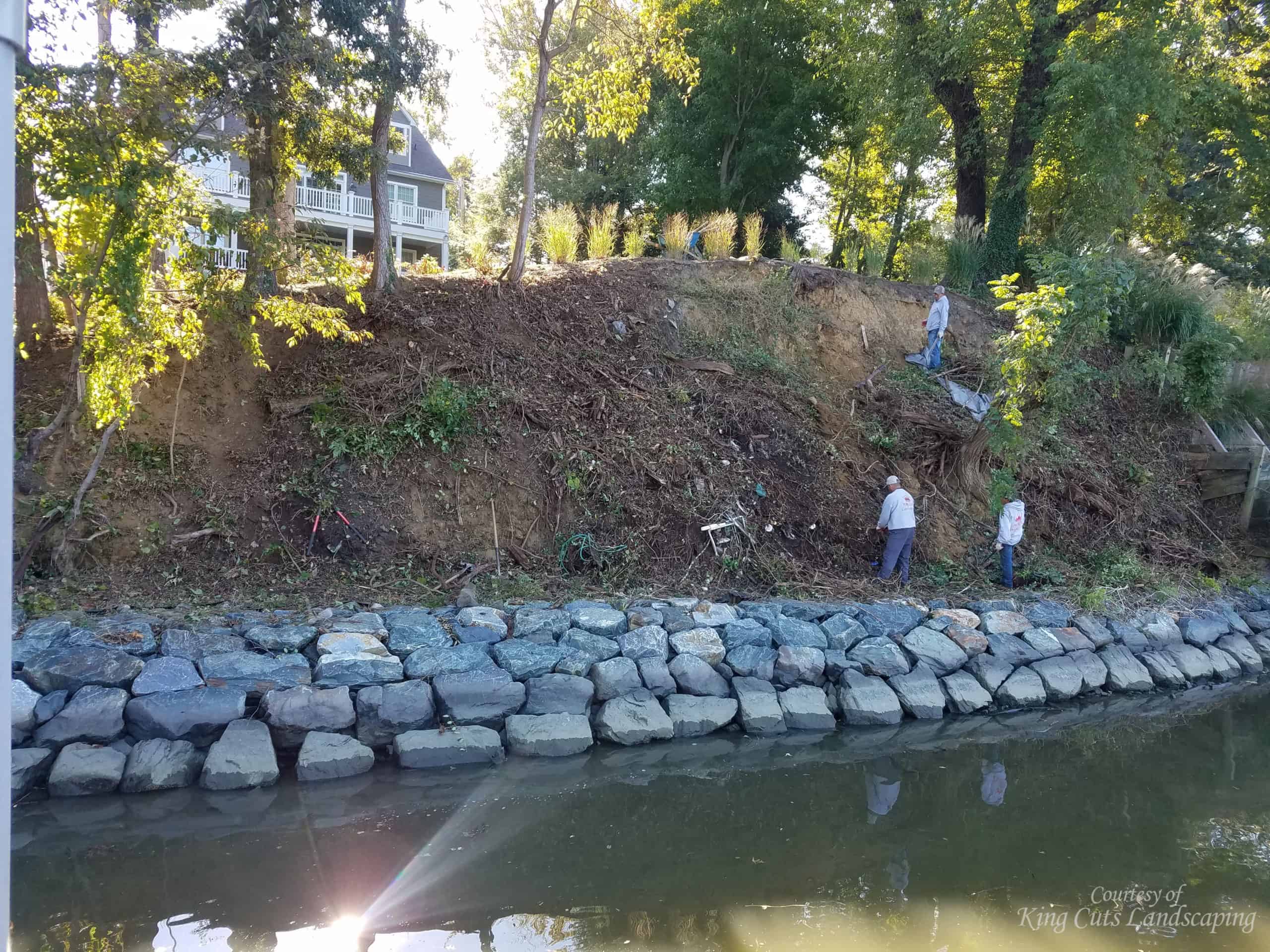February 20, 2020

Each brief educational session is designed to provide concise, interesting, informative insights on a variety of topics in just 60 seconds. You will be surprised at how much you can learn with only 60 seconds of your time!
Session 4:
SlopeGrid® A Retaining Wall Alternative
Retaining walls are defined as structures that hold or retain soil behind it.
The main cause of retaining wall failure is poor drainage. Without adequate drainage, hydrostatic pressure builds up behind the wall and the wall fails.
Hydrostatic pressure is essentially the same pressure you feel in your ears when you dive down deep to the bottom of a swimming pool. Hydrostatic pressure has to do with the pressure exerted by water and atmospheric or barometric pressure has to do with the pressure exerted by air, which is what we feel in our ears at the top of a mountain or in an airplane.
Hydrostatic pressure behind a retaining wall is a combination of a downward pressure, due to gravity, and an outward pressure. The pressure builds up and materials behind the wall press hard against it.
When water can’t drain away from behind the wall the soil gets soggy and very heavy. The force of gravity pulling down on the wet soil causes lateral pressure and sometimes it is too much for the wall.
With the right amount of drainage a retaining wall will not experience enough pressure to cause a failure. But, how much drainage is enough? This is hard to determine at the onset of a project.
What if we could achieve the same results but avoid the entire issue of hydrostatic pressure? Let’s look at a completely different approach!
SlopeGrid® consists of a series of interconnected cells and when fastened to any slope it will stop erosion and keep soil in place.
SlopeGrid® is a fascinating alternative to a traditional retaining wall. Depending on the soil conditions and degree of slope a variety of different options for securing the grid to the slope are available. In some cases, rebar J hooks installed throughout the slope are adequate to keep the grid in place. Other times earth anchors and cabling are added for additional strength.
The cells can be filled with soil and planted, which keeps the slope looking beautiful and natural. Besides, root growth provides optimal erosion control. Or, the cells can be filled with stones. In either event, the sloped earth is contained and erosion is under control.
Benefits of using SlopeGrid® instead of a traditional retaining wall:
- Materials are low in cost compared to block walls.
- No fear of hydrostatic pressure and retaining wall failure because there is no wall.
- No need to calculate drainage and wonder if it is enough.
- Installation is fast and easy.
- When planted with vegetation the slope has a beautiful, natural look.
- Materials are lightweight and easy to hand carry on a jobsite, which can be especially helpful on a hard to reach or particularly steep slope.
- Shipping costs are low (we fit at least 4,176 sf of bundled SlopeGrid® on a single pallet).
Below are photos from a recent project in Maryland.
Call or EMAIL us for more information.
Click here to read and learn more.
These products are available through Cell-Tek Geosynthetics or your local dealer.
Please give us a ring 888-851-0051 or email info@celltekdirect.com.
We look forward to hearing from you!
www.celltekdirect.com











